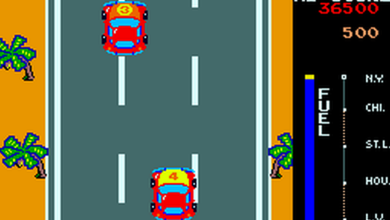A look back at the history of the NES. Part One: NES’s Rise And Conquer By Drew McCabe
There are some systems that are so beloved and universally regarded, it is hard to deny their overall impact on the industry, and certainly the king of those cases is the Nintendo Entertainment System, better known simply as the NES, or in Japan and certain parts of Asia as the Famicom.
Video of this article – Part 1 of 2: Japan & the Famicom
Born in Japan on July 15th, 1983, Nintendo’s Famicom would enter into a sea of competitors. There were about 4 or 5 other consoles already on Japan’s home market at the time, however this didn’t stop Nintendo from releasing their own, and even releasing a system on the very same day as another company would premiere their own.
Early 1983 Famciom commerical:
In fact, that other company would go onto be their chief rival for many years, Sega, who released their SG-1000 system the same day. So how did the Famicom, short for Family Computer, pull a head in such a busy market place and to go on to become one of the most beloved systems that it still is today? Looking at the overall picture, if anything it could have been anyone’s game on that July 15th, but Nintendo had a few tricks up its sleeve.
The biggest and most notable was it had the best graphics out of any current system upon its release in 1983, even better than Sega’s SG-1000. Next, its price point was only 14,800 yen compared to the SG-1000’s 15,000 yen, so it was cheaper to buy. Finally although the Famicom would only have three titles at launch, each one was an arcade port of a popular title, Donkey Kong, Donkey Kong J.R. and Popeye.
Now Sega also launched with all arcade ports, so initially fans of whichever specific arcade games flocked to either one of the systems depending on what their arcade playing preference was, but very quickly Nintendo’s cheaper price point mixed in with stunning graphics dominated the market, killing off every other console before it in Japan, with the exception of Sega (which retained a large enough following to keep the system alive through numerous remodels for 3 years before launching their second system, the Mark III/Master System).
Having conquered it’s home land, Nintendo looked next to one of the biggest home video game markets in the world at the time: the United States, which at the time was entering the infamous videogame crash of 1983. After talks with both Atari, whom had much success with the Atari-2600, and Mattel, whom had their own wide success with the Intellivision, Nintendo and Atari entered a deal and Atari began advertising the machine as the Atari-Nintendo Advanced Video Gaming System at electronic shows by the end of 1983.
However at these same shows Atari would discover Nintendo licensed the Donkey Kong titles to Colecovision for North America, violating their exclusive rights deal, killing the release altogether, Atari immediately pulling out and began secret development of the Atari-7800. Nintendo decided to truck on solely in North America from that point and took over a year to study the market, finally launching the Famicom, rebranded now as the Nintendo Entertainment System, better known as the NES by the end of 1985.
Like its success in Japan, the now dubbed NES was a well calculated release for it’s venture into the States. Firstly, it didn’t call itself a video game console to distance itself from the recent crash, hence why it called itself an Entertainment System.
Secondly the initial release was packaged advertising use with R.O.B., a robot that could plug in and interact with games, branding the device more as a high-tech toy than a video game console, again avoiding memories of the crash for folks. Finally, Nintendo did an honest marketing campaign for its initial game releases in the USA.
Commercial:
Traditionally video game boxes had lavish painted illustrations on their covers, a great contrast to what was on the actual ROM-cartridges of the time. Nintendo instead showed the 8-bit graphics proudly, so not only you knew what you were getting, you also knew it looked better than games for other systems. Nintendo finally played the low price point game again, selling the system by itself for $89.99, or packaged with a game for just $99.99.These factors were combined with Nintendo was having a bit of luck with the market timing itself. Atari started to release the Atari-7800 in test markets in 1984, which was graphically just as nice and easy to play as the NES, as well as backwards compatible with Atari-2600 games, but was forced to pull back its full launch by its parent company until 1986 (when NES had already dominated the American market).
The Intellivision was already on a decline across North America after Mattel sold it off in 1984 and was now struggling to continue growing due to lack of marketing dollars necessary for the push it needed (side note, although sold off in ‘84, Intellivision lasted having both games and new units produced until 1991 in the States by company INTV). The final cherry on the top was that the Colecovision struggling from the crash still, stopped production in 1985.
This meant really the only competition was the much inferior Atari 2600. Simply, this means lighting struck twice for Nintendo. However, now having sold over 2.5 million systems in Japan alone, and the success immediately spreading across the USA, Nintendo looked elsewhere to continue its world domination.
It’s release in neighboring Taiwan was actually dwarfed and beaten by Sega’s SG-1000 system, the first fail for Nintendo in a market and the first case Sega beat them as a leader, and its release in South Korea, where it was released by Hyundai Electronics as the Hyundai Comboy, proved modest.
This left a new large market to take a shot at: Europe. However being it reinvested much of its Japanese profit in creating a strong US-presence, Nintendo needed outside support for this new territory to both understand the numerous market needs in so many different countries that made up Europe, plus economically manage it all.
They decided the solution was to use distributors to help advertise and sell, not an unusual approach, distribution still used for majority of computers and electronics today. They went back to Mattel, now free of their Intellivision responsibilities, who agreed to launch it for Nintendo, keeping the NES branding, for 1986 in the United Kingdom, Canada, Australia, New Zealand and Italy.
Other European countries, as well as South America, followed throughout ’86 into the ‘90s by one-off toy distribution deals with various partners, which all eventually would be united before the end of the 1990s under Nintendo Europe’s banner, in which like Japan and the USA, Nintendo would start running everything in Europe themselves.
The systems biggest competitors at first across Europe was the wave of micros that dominated the market, such as the ZX Spectrum, however again, the use of marketing, price points, the simplicity to play, and its graphics provided a combination which helped it start gaining popularity. This traction was soon halted though when Sega’s Master System began being released across Europe in 1987, eventually becoming both the more popular and higher selling system in both Europe and South America. Despite this fact, the NES still sold, still developed loyal followers, just not at the rate Sega was able too.
So although the NES was outperformed by the Master System in those markets, it still undeniably left an impact in those regions which carried on into its future system releases in those regions, and today this day remains an important retrogaming unit. Interestingly, the single large territory Nintendo never ventured into during this time was the Soviet Union, due to both political and economic reasons in that area of the globe. During the 1980s, gaming in the USSR was all driven by micros.
However in 1992 after the USSR’s collapse, the Dendy was released in both Russia and main land China, and was actually a famicom-clone. The design was dead-on that of the Famicom, however the cartridges were constructed differently (though at glance, also look alike). The Dendy would go onto the sell over 4 million units across Russia alone, and in 1994, Dendy would sign agreements and roll into Nintendo’s European branch to produce licensed versions of the SNES for Russia, China and other territories.
Next time we will look at the guts and many add-ons that made up the NES, some of its fan favorite games which changed the industry, and the factors that lead to its decline and eventually birthed the SNES.
Article By Drew McCabe






![RetroArch Starter Guide [2025] RetroArch Starter Guide [2025]](https://i.ytimg.com/vi/PwJEIYZXLgw/maxresdefault.jpg)

